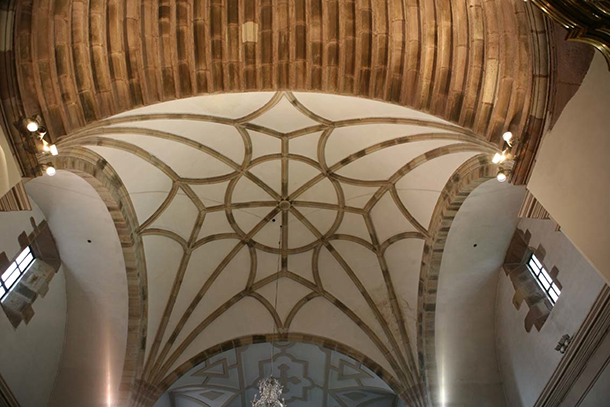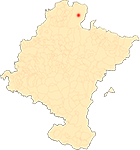Renaissance churches in the Baztan valley
By María Josefa Tarifa Castilla
The architects: the master stonemasons of Baztania
The Renaissance churches of Baztan were carried out by master stonemasons from the valley, experts in stone work , an area with an important quarrying tradition due to its pinkish sandstone quarries. Construction professionals grouped in itinerant crews, formed by the master, journeymen and apprentices, in which it was common to find several members belonging to the same family, as the official document was normally passed from father to son, or from uncles to nephews and nieces.
One of the most prolific clans of stonemasons is the Oiz family, headed by Pedro de Oiz (†1580) in the mid-16th century, who worked on the parish churches of Irurita, Arizkun, Lekaroz and Ziga, with his son Martín de Oiz helping him in the latter business . However, the most outstanding member of this dynasty of stonemasons was Miguel de Oiz, neighbor of Gartzain and nephew of the aforementioned Pedro, who was involved in the construction of the parish churches of Arraioz (1568), Arizkun, Goizueta, Zubiri, and those of Berroeta, Eugi (1581) and Gartzain, which were continued after his death by his sons Juanot and Juanes.
Martín de Urrutia (†1596), son-in-law of Pedro de Oiz, undertook the chancel, chapels and sacristy of the parish church of Arizkun (1584), and the execution of the vaults of the parish church of Irurita (1584), interventions that were later replaced by the Baroque temples existing at the present time. Likewise, in the decade of 1580 he went to position to continue the works begun in the church of Ziga, and his son Juan de Urrutia succeeded him in the direction of the same from 1591.
Juan de Garaicoechea y Oiz, a resident of Elizondo, was one of the most avant-garde stonemasons who developed his prolific construction activity in Navarre between the end of the 16th century and the beginning of the 17th, working on the parish churches of Eugi, Berroeta, Elbete, Eratsun, Gartzain and the church of Santa María de Lerín (1591), in whose main chapel he turned a concha avenerada similar to the one he undertook in the apsidal space of the church of San Martín de Gartzain from 1594.
ECHEVERRÍA GOÑI, P. L. and FERNÁNDEZ GRACIA, R., "Arquitectura religiosa de los siglos XVI al XVIII en Navarra", in Ibaiak eta Haranak, Guía del patrimonio histórico-artístico-paisajístico, t. 8, San Sebastián, Etor, 1991, pp. 175-216.
FERNÁNDEZ GRACIA, R., (coord.), ECHEVERRÍA GOÑI, P. L. Y GARCÍA GAINZA, M. C., El arte del Renacimiento en Navarra, Pamplona, Gobierno de Navarra, 2005.
GARCÍA GAINZA, M. C., ORBE SIVATTE, M., DOMEÑO MARTÍNEZ DE MORENTIN, A. and AZANZA LÓPEZ, J. J., Catalog Monumental de Navarra, V*. Merindad de Pamplona, Pamplona, Institución Príncipe de Viana, 1994, pp. 285-422.
OMEÑACA SANZ, J. M., "La iglesia parroquial de Ciga en el Baztan", Scripta Theologica, t. 16, 1984 / 1-2, pp. 543-552.
TARIFA CASTILLA, M. J., "The shell churches of the Renaissance in Baztan. Cuadernos de Artes Plásticas y Monumentales, San Sebastián, Sociedad de Estudios Vascos, 2009, pp. 333-405.











